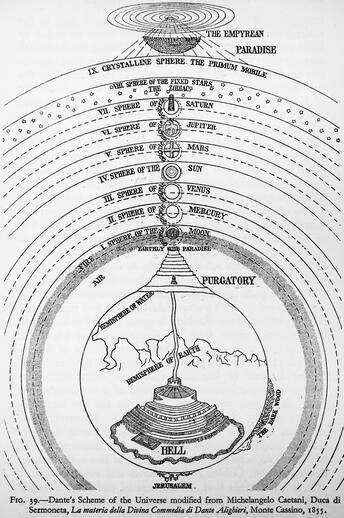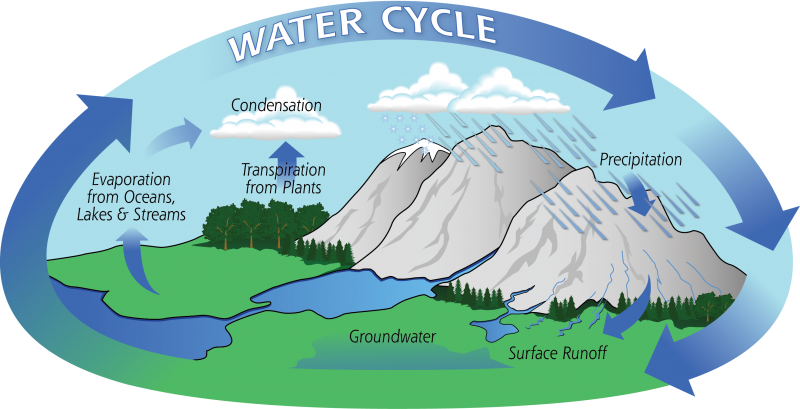Instress, part 1
The secrets of clouds

Some poems declare their interest in magic openly through formal choices. Some poems are constructed as and/or “after” ancient or occult spells and take the form of a spell, which has some generally predictable structures. If we go from the ancient spells exemplified in Joshua Trachtenberg’s work, we’ll find these components: appeal, historiolae (historical or mythological precedents/correlates of the situation at hand), invocation, enunciation of names, request.
Of poems that follow this form, sonic choices alluding to the spell’s incantatory form might be the easiest to identify as invested in magic; poems of chant and litany lull and charm the reader with sound. Not all poems engaged in sound do this, of course, but, if we’re looking for magic, we can start with sound and form. These poems don’t need to declare their occult sensibilities in name, either, though they sometimes do. I often point to Ariana Reines’s “Thursday” from A Sand Book (2019) as a good example of alchemical sound that works through magical poesis: the words “Thor/Thursday/Thurman” mingle and melt together, are later teased out as individual phonemes. The magic is in the sonic mix of “th,” which is interestingly also Caroline Bergvall’s magical “thorn” sound and runic character in Drift (2014).
The poems in Earth is Best engage with both sound magic and magical form, and they also move into the “essences” of magical language, which makes them a prime example for my purpose of pinpointing what makes magical poetics tick. Peter O’Leary has written a trilogy of books that looks much like Dante’s Divine Comedy in certain respects: Phosphorescence of Thought (2013), Earth is Best (2019), and The Hidden Eyes of Things (2022) are what O’Leary calls a trilogy about “modes of consciousness” (Earth is Best,111). I would pinpoint this middle volume as the Purgatorio of the sequence, which makes it, to me, the most interesting via a few of my own preferences. This is a book interested in the in-between, in the Bardo, of metaphysics. This “between” is manifested through the mushroom, both as an organic unit, of sorts, and as a concept.
As O’Leary says, the lowly mushroom is the cloud of the earth — both mushrooms and clouds spring from the earth or the sky, manifesting what he calls “instress” up and ballooning in between the source of their energy and the next natural location: the sky, which for both cloud and mushroom is a between. Paradiso is the ultimate above, Inferno the ultimate below, and Earth is Best manifests the in-between. O’Leary’s gnostic vocabularies (and expansive, they are) write this space with a sonic boom of attention. Every poem in this book is a sound experiment and a delight — often a puzzle, as well, to the ear. Sound is the practice on which this type of mushroom poem magic is balanced, and the alchemy of this-to-that (mushroom/cloud) is the sandbox/earthbox of O’Leary’s poems.
In these poems, sound is related to the expression of the essential energy or magic manifested by the mushroom and the cloud. “Instress,” borrowed from the ancient Greek philosopher Parmenides via Gerard Manley Hopkins to O’Leary, is loosely defined as this essential expression of being. For Hopkins, “instress means something like a manifestation of a thing’s being,” and expression is, for humans, languaged in words that define that being as far as we can do so (O’Leary, 84). Hopkins thrives in sonic sonnet magic throughout his work; we might expect to find a magical poesis blossoming from Hopkins’s music.
O’Leary turns to Hopkins’s poem “The Wreck of the Deutschland” as one manifesto/manifestation of Hopkins’s version of instress theory — a poem “more like a gash of light than a set of claims,” O’Leary writes — in which Hopkins, a mystical Christian devout, declares Christ’s mystery (the essence of Christ-ness, we might say, upon which faith rests) as a thing “instressed” (O’Leary, 85). Instress is likened to mystical vision, a reaching into the eternal, immortal magic of a thing itself.
This is a digression, an epic metaphor on instress.
Instress is an expression of being. Instress is how one perceives a thingness; we might call this essence, or in language, meaning. Linguistically, we might deconstruct a signifier from its instress and that word would no longer (temporarily, maybe) be the sign of that essential meaning. In the exact moment it is disconnected, though, I imagine that signifier to be not severed from its instress, but loosed … the word is unmoored, but not entirely untied. Connoted meaning holds on, and the signifier, bereft of instress, is let free to explore other meanings in our minds. I’m in love with H.D.’s Thought and Vision jellyfish, so I’m picturing the body of the jellyfish as meaning or instress, with all of the little tendrils of stingers sprouting from the body as the looseness of a word forced away from its essence.
These other meanings, jellyfish bodies floating around, are also not signifier-less and are not entirely free-floating, waiting for us to “find them.” I don’t propose there’s an excess of meaning out there. Meanings flow together, touching, extending their moorings to one another and to all of the meanings they have touched over time, as our individual, subjective experience interprets those touchings and scraps, in a sea of jellyfish. The tendrils connect words for each of us, some words very closely wrapped, maybe the word our mother used in a specific, caregiving way, or a word we associate with trauma. Those words are tightened to their meaning. Others have space around them in the sea. This sea is chaotic, pulsating, shapeless, with expansive, flexible, collapsible volume. Maybe for some this sea feels more rigid, more like an icecap with one standard jellyfish populating it; maybe for others, the sea is more buoyant and variegated. These meanings and jellyfish are essences and the sea is a metaphor, a blip of loosened meaning we can glimpse momentarily. The sea is an in-between, like where the cloud and the mushroom blossom. And like in the sky where those instresses appear, mirroring each other, we also exist and define meanings with words (or vice versa) and try to make sense of existing.
Back to the earth, temporarily: “What Hopkins sees instress in most readily are clouds,” O’Leary postulates (86). “As clouds are to the sky, so clods — especially in the form of mushrooms — are to the earth” (90). The mushroom itself is an expression of the rhizomatic system below, not the entire organism. The mushroom cap is the protruding reproductive organ of the mushroom system spread into the dirt — what O’Leary calls its “outlease and downspread,” as opposed to clouds’ “instress and uplift” in that they are the expression of water vapors rising through the air (90). The mushroom and the cloud form an “antonymic” pair that finishes the “energetic system” of planet Earth, with language as the in-between “field of manifestation” (90).
Are you picturing this system? Think of a water cycle map from grade school plugged into a Dantean map of the Earth featuring the extremes of heaven and hell, placing mushrooms opposite the clouds. In this Caetani map, the mushrooms and clouds go with “air.” And maybe that mountain in the water cycle map is Mt. Purgatory. Language is the construct within which these energetic correlations exist as we, humans, perceive and create them in our perception of them. I love this field of instress that is the sky, that is the sea of jellyfish, because it is the Bardo where language plays, and the trans-lation of words across this space is the alchemical action of poetry.

The world of Dante’s Divine Comedy, as illustrated by Michelangelo Caetani, duca di Sermoneta, in his book “La materia della Divina commedia di Dante Alighieri dichiarata in VI tavole,” Passerini G.L. editor, 1921.
 Diagram of the water cycle, courtesy of NASA.
Diagram of the water cycle, courtesy of NASA.
O’Leary writes a taste of his version of Hopkins after unpacking instress:
A nimbus.
A cloud.
Some sod.
A sward.
Some turf.
A health of earth
epochal riots of the fungal nimbus
activate —
avalanching peat of cumular white
loaves and buns of mahogany stones. (92)
Sound, as we also see throughout Hopkins, translates the energy of the heavenly field (the “nimbus”) into “a health of earth” that ends in both cumular white (clouds) and in brown stones that evoke earthy peat. The translation of energy, inasmuch as this is a demonstration of the system of energetic exchange between earth and sky, crosses through the Bardo as sound. Sound is the magical energy of language.
The language Bardo, where meaning is unfixed, is crucial to magic. It is the borderlands, the contact zone, the magic circle’s border of salt; it’s the queer, it’s the swerve, and it’s the sea.
— Eric
Magical Poetics